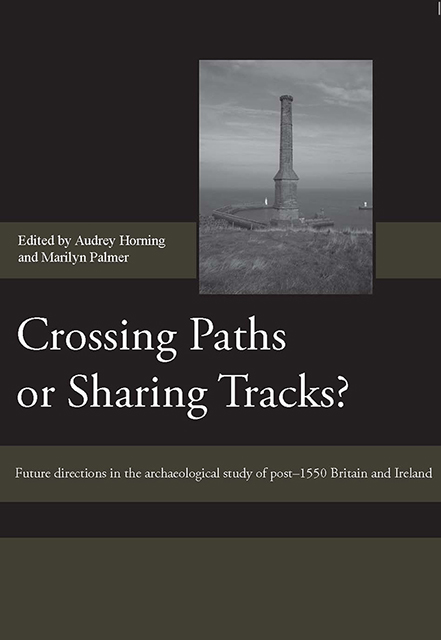 Crossing Paths or Sharing Tracks?
Crossing Paths or Sharing Tracks? Published online by Cambridge University Press: 07 March 2023
The nine chapters in this section set out individual views on the contemporary practice of archaeology of the past five hundred years. Chapter 1, by Charles Orser, situates the practice of historical archaeology into a global context, considering the dialectic between scales of analysis. How do we acknowledge those global forces resultant from early modern European expansion such as capitalism and class formation without losing sight of understandings of individual human action rooted in the material evidence of archaeological sites? Orser grounds his discussion with a consideration of the archaeology of 19th-century rural Ireland, and argues strongly that ‘now is the time that archaeologists must think even more determinedly about linking theory and practice’.
Following Orser's overview of the multi-scalar character of historical archaeology and its theoretical underpinnings are three chapters that focus very specifically upon the debates within contemporary British industrial archaeology, which were themselves a spark for the original Crossing Paths or Sharing Tracks? conference. In chapter 2, David Gwyn provides an eloquent and measured overview of the debate between industrial archaeologists over the centrality and relative merits of approaches prioritising technology and approaches that prioritise the human experience. Gwyn situates his discussion in the context of the overall development of industrial archaeology, born in the aftermathof the Second World War, and long characterised by two interest groups: a sizable corps of avocational industrial archaeologists ‘who found for themselves an interesting and challenging hobby to follow’, and a much smaller, if at times more vocal, academic cohort.
While Gwyn ultimately sees no fundamental rupture in contemporary industrial archaeology, in the next chapter Michael Nevell acknowledges that there are ‘extreme elitist’ voices in industrial archaeology that reject contemporary research agendas and ‘do not wish to engage withthe wider archaeological community’. Not shying from self-reflexivity, Nevell then admits his own greater interest in the social, rather than technological, elements of industrial production. Using the distribution of mills in the Greater Manchester region, Nevell then illustrates how the two approaches, technological and social, invariably provide contrasting explanations for similar data sets. In the final analysis, he suggests that ‘the current debate should not be about whether we should do these things and whether this is truly industrial archaeology, but how well we understand the interconnection between machine and landscape, society and technological change’.
To save this book to your Kindle, first ensure [email protected] is added to your Approved Personal Document E-mail List under your Personal Document Settings on the Manage Your Content and Devices page of your Amazon account. Then enter the ‘name’ part of your Kindle email address below. Find out more about saving to your Kindle.
Note you can select to save to either the @free.kindle.com or @kindle.com variations. ‘@free.kindle.com’ emails are free but can only be saved to your device when it is connected to wi-fi. ‘@kindle.com’ emails can be delivered even when you are not connected to wi-fi, but note that service fees apply.
Find out more about the Kindle Personal Document Service.
To save content items to your account, please confirm that you agree to abide by our usage policies. If this is the first time you use this feature, you will be asked to authorise Cambridge Core to connect with your account. Find out more about saving content to Dropbox.
To save content items to your account, please confirm that you agree to abide by our usage policies. If this is the first time you use this feature, you will be asked to authorise Cambridge Core to connect with your account. Find out more about saving content to Google Drive.